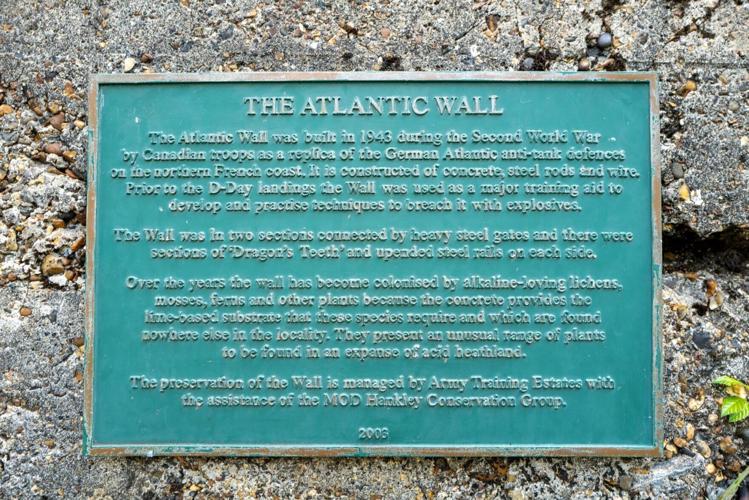
(Tony Kershaw via SWNS)
By Imogen Howse
This nondescript wall in a Surrey woodland played a key role in WWII - helping Allied soldiers prepare for the D-Day landings.
Hankley Common is a 560-hectare nature reserve inside which hides a fascinating piece of history: a 100m long, 3m high, and 3.5m wide structure, which is a replica of the famous, Nazi-built Atlantic Wall.
The original Atlantic Wall was a series of armouries, bunkers, and both natural and man-made obstacles put into place during WWII to defend Nazi-occupied Western Europe from an anticipated Allied invasion.
It stretched from northern Norway all the way down to France and Spain, and at the time, was thought to be an impenetrable defence.

(Tony Kershaw via SWNS)
However, on June 6, 1944, as part of meticulously planned Operation Overlord, better known as D-Day, the wall was breached within hours - because Allied soldiers had created their own replica to practise on.
Inside Hankley Common, Royal Canadian Engineers based in the area built their own replica wall - as well as other defensive structures they expected to face after landing on the Normandy beaches.
These included dragon’s teeth, which immobilised tanks by lifting their treads off the ground; pyramid blocks, which channeled the flow of enemy traffic into designated zones; and various concrete blocks and wire entanglements, which were designed to keep Allied forces at bay.
Soldiers spent months training with these structures - and ultimately worked out the best way to invade and establish a foothold in Nazi-occupied France.

(Tony Kershaw via SWNS)
D-Day marked the beginning of the end of German occupation in Western Europe - and is one of WWII's most crucial events.
The replica Atlantic Wall is no longer used for training for the British Army but it remains in Hankley Common as a reminder of the brave soldiers who landed on the beaches of Normandy in 1944.
It is now cared for by the Defence Infrastructure Organisation (DIO), and can be visited by the public.
In order to stay safe while visiting and allow the British Army to train uninterrupted, people are advised to:
- Only access military land when and where it is safe to do so
- Pay attention to and abide by all signage, including red flags
- Stick to designated footpaths, bridleways, byways and PROW
- Report any military debris for safe removal and never touch or remove it
Richard Osgood, Senior Archaeologist for DIO, said: "For the troops training in 1944, having this construction to attack and work out the weak points on was essential.
"It gave the Allied forces the knowledge and skills to progress the invasion beyond the landings.
"Effectively, by 1944, Britain was one huge training area getting ready for those landings in June.

(Tony Kershaw via SWNS)
"You’ve got to think in the 1940s the whole focus of the country was liberating Europe and this was a small, but vital, part.
"D-Day is one of the most important parts of the nation’s history and the monuments from this time are incredibly rare.
"DIO’s work to protect and preserve these pieces of British military history helps us remember the brave personnel who lost their lives during this time, keeping the legacy of D-Day alive for future generations.
"The Atlantic Wall acts as a poignant reminder to serving personnel training on the estate today about the sacrifices and dedication of those who came before them and the important work they do defending our nation today."



